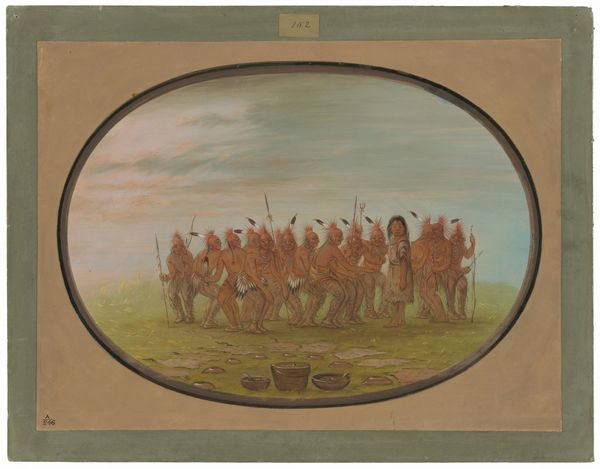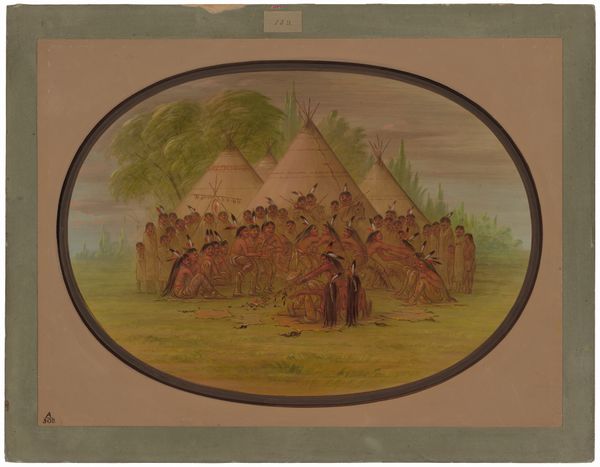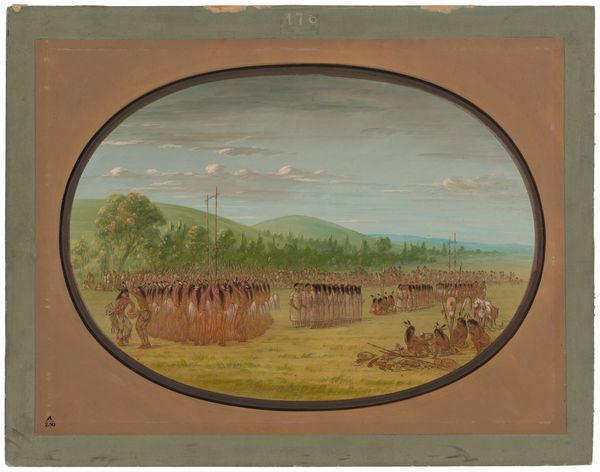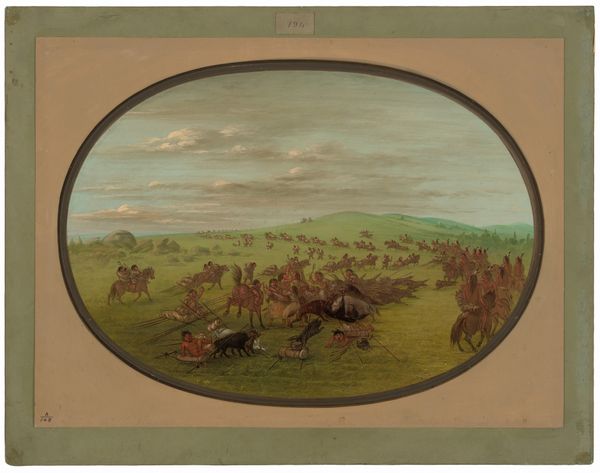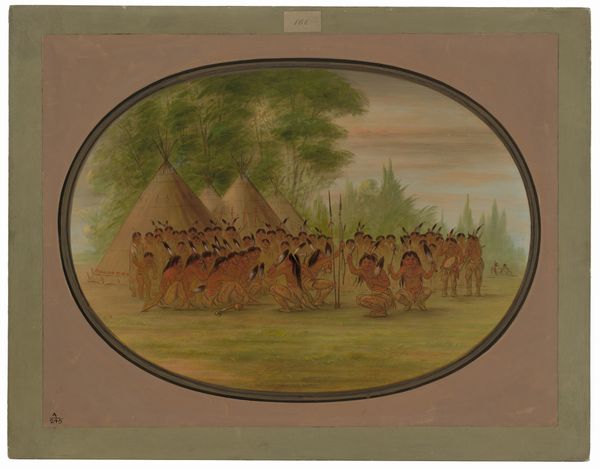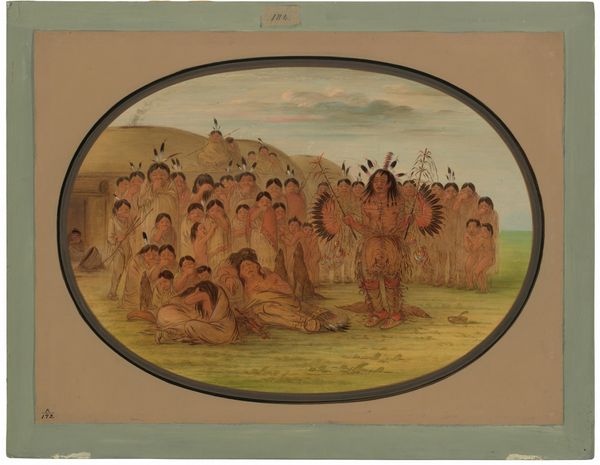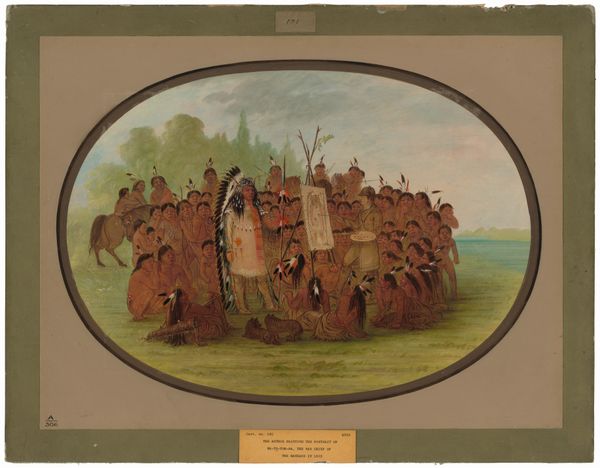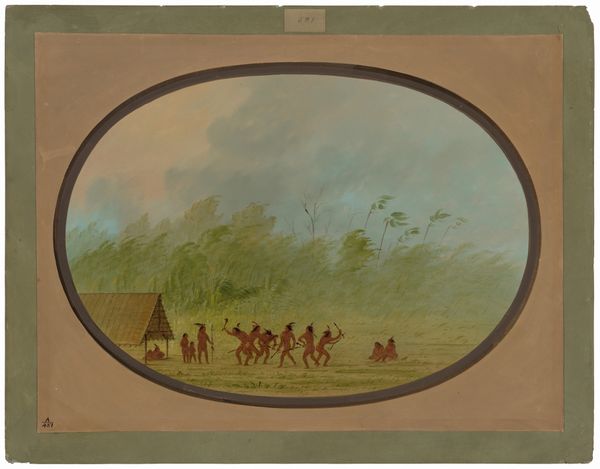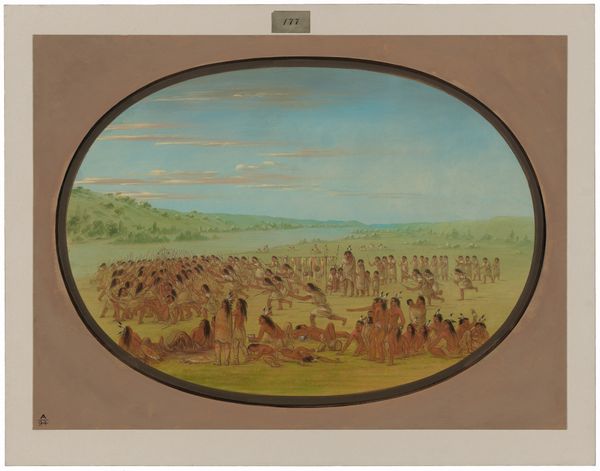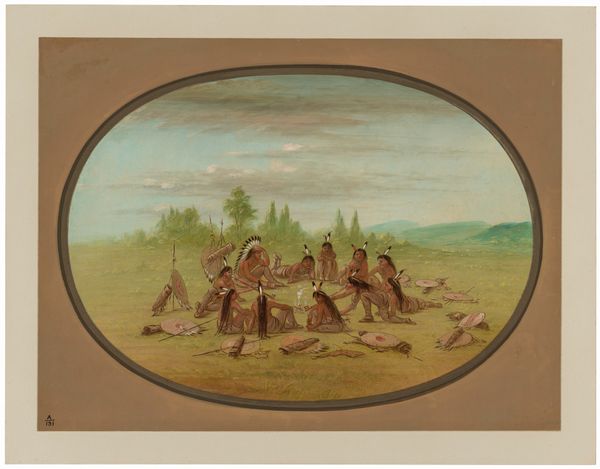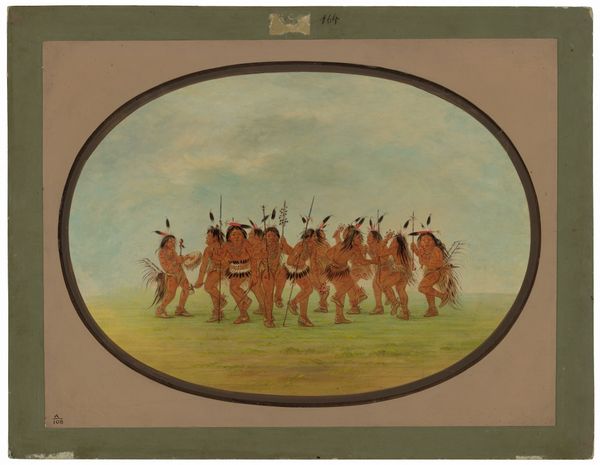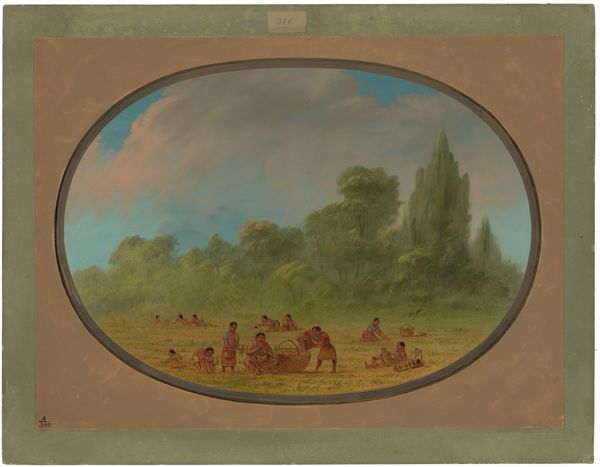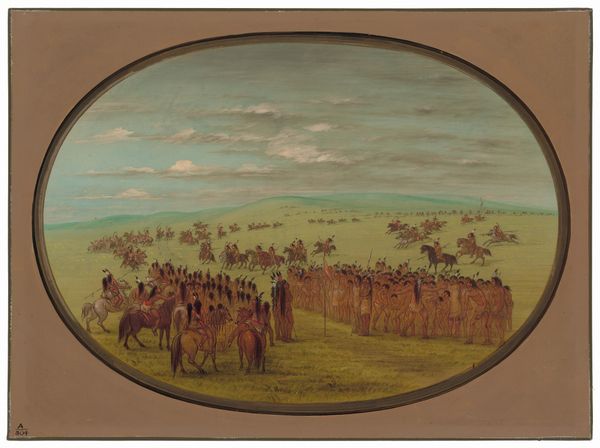
painting, gouache
#
narrative-art
#
painting
#
gouache
#
genre-painting
Dimensions: overall: 47.8 x 63.8 cm (18 13/16 x 25 1/8 in.)
Copyright: National Gallery of Art: CC0 1.0
Curator: Take a moment to consider George Catlin's "Game of the Arrow - Mandan," likely created between 1861 and 1869. The watercolor painting captures a vibrant scene within an oval format, which is an unusual artistic decision, really. Editor: It feels almost like looking through a vintage lens, or a memory encapsulated. There’s a slight dreaminess, a softness in the color palette despite the subject matter seeming quite active. What grabs me is how the oval crop isolates the scene. Curator: Indeed. Catlin, though controversial for his romanticized depictions, spent considerable time documenting Native American life, aiming to preserve their traditions through art. This piece shows the Mandan people engaged in their "Game of the Arrow", a test of skill. You can see them shooting arrows across the field, trying to hit specific targets, while spectators gather. It almost looks like they are lining up to cross some invisible threshold. Editor: Right, but let's unpack that “romanticized” view, though. These paintings become fraught when you consider the history of colonial violence. Viewing indigenous practices as picturesque "games" naturalizes erasure. How do we reconcile appreciating the artwork without glossing over its potential to sanitize or distort brutal realities? Curator: That’s fair, the tension between appreciation and critical engagement is important. For Catlin, perhaps this was an attempt to preserve a disappearing culture—from his perspective, at least. I am intrigued with the people in the very far back and how they seem very calm, watching the other, closer, figures. Editor: He does try to give individual character, with slight gestures or positioning, even if the perspective is not exact. Maybe that focus on the human element, within a specific cultural context, invites a conversation. Even a fraught conversation. Can art bridge these difficult spaces? Curator: Perhaps, that's where it becomes compelling beyond a pretty picture, yes. It nudges us towards history. Like how they position those animal skins in the foreground to symbolize an important element of that tribe. It does encourage curiosity, a connection to the artist’s own feelings about that community. Editor: So, in the end, beyond aesthetics and technique, the painting is also a portal, but one we need to enter thoughtfully, with historical awareness and sensitivity. Curator: A portal that’s a little creaky but worth opening if one dares to wrestle with what is concealed behind that artistic lens.
Comments
No comments
Be the first to comment and join the conversation on the ultimate creative platform.
